The year is 2024 and Earth is under attack by giant robots called MegaMechs. Arriving without warning and attacking major cities, they quickly conquered the world’s nations. Nobody knows where they came from, who controls them, or what they want. Only one power still stands against them: A scrappy band of heroes called the Mechstermination Force. I play as a member of this crew, setting out on solo missions to save the world, one person against a robot the size of a building. Only by conquering fourteen MegaMechs in a run-and-gun marathon of clever and intricately-designed boss fights can Earth be saved.
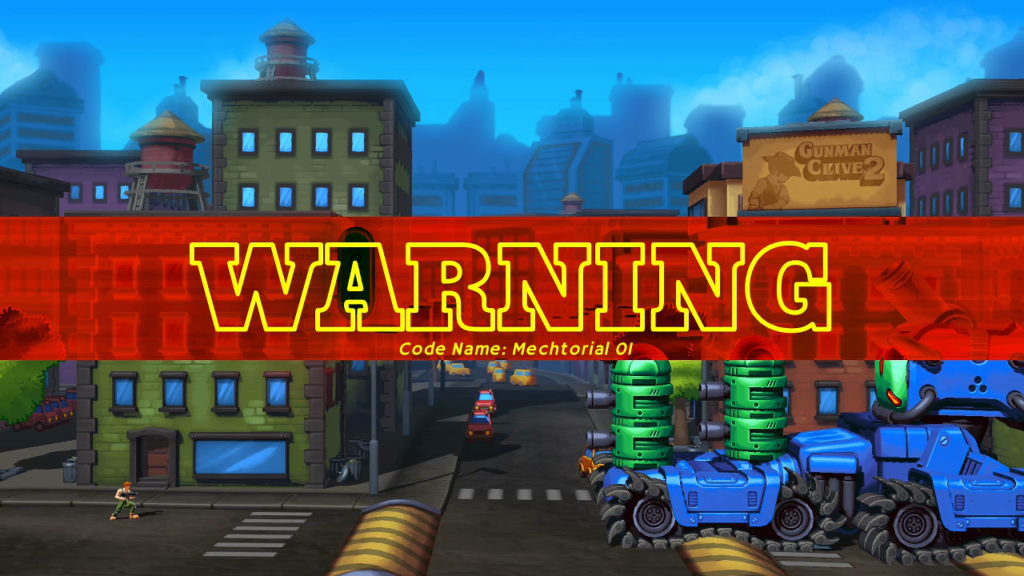
Mechstermination Force revels in a friendly, comic appearance tinged with just enough dark humor to complement its grim subject matter. In the first level, the assembled Force is told by their Captain that they are “the best of what’s left.” Five of these leftovers are immediately taken out from a missile volley by the first MegaMech, leaving my player character to stand alone. These survivors spend the rest of the thirteen subsequent battles loafing around the Mechstermination Force base, recovering from their injuries while making grandiose proclamations that make me suspect they’re actually being lazy.
The overall presentation can potentially deceive onlookers at just how difficult Mechstermination Force is. The world, its characters, and the marauding MegaMechs are rendered in bright friendly colors and each level is soundtracked by brassy, high-energy jazz. Danger always seems far away and success assured. This is far from the truth. Each MegaMech requires patience and experimentation to discover its weaknesses so it may be toppled and destroyed.
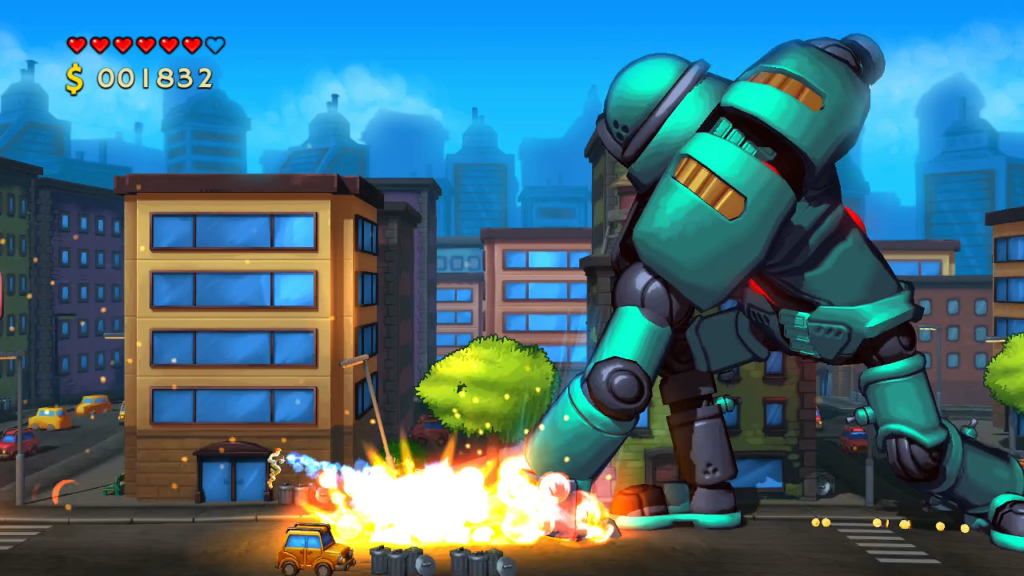
There are no platforming levels preceding each MegaMech battle, though the player character’s abilities could easily support them. Each “level” is a pitched battle in a single boss-style encounter and nothing more. Between missions at the Force HQ, I select the next MegaMech the player character will battle from a mission list, and we are immediately plunged into the battle with no introduction or preamble.
The player character is unremarkable. They can run to the left and right, they can jump, and they can fire their gun. The gun can be fired in all 360 degrees by pointing the joystick. If I hold down a shoulder button, they will crouch in place, transforming the left joystick from movement to 360 degree aiming. Leveraging this ability is key to success, crouching to fire at specific parts of a MegaMech during moments of vulnerability then running to safety from its next attack.
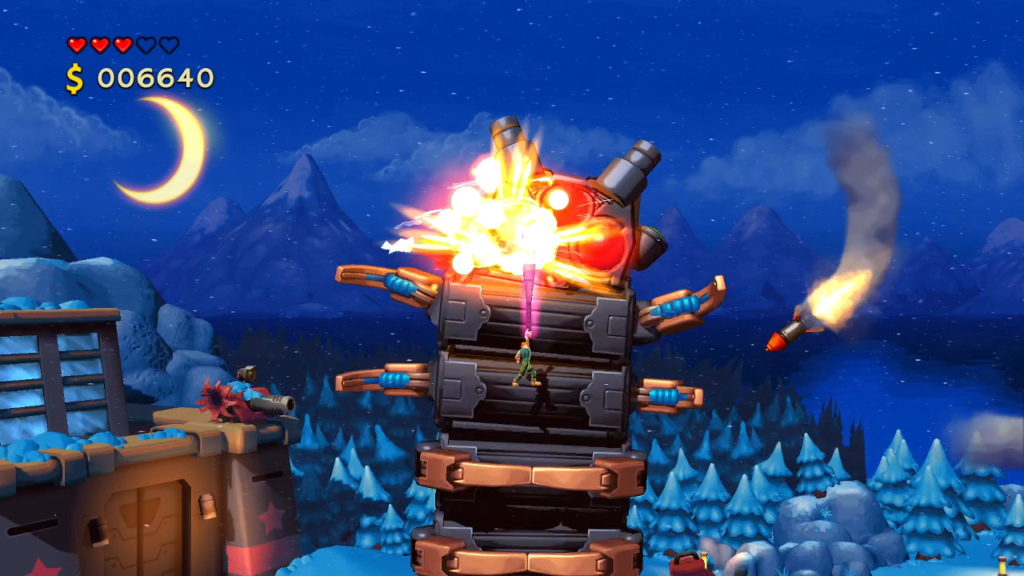
Each MegaMech has one or more weak points, and in typical videogame convention, those weak points are giant glowing red orbs. These weak points are invulnerable to gunfire and so must be destroyed with the swing of a melee weapon. This is the easy part; the hard part is getting close enough to reach the weak points so they may be smashed. Reaching each MegaMech’s weak points becomes a kind of puzzle that tests my skill at sidescrolling run-and-gun combat and platforming.
The Mechapede S82 is an early MegaMech the Force takes down. As its name implies, it is a giant centipede. Its glowing red eyes are vulnerable, but it protects them by stretching to its full height while launching missiles at the player character. Reaching its eyes is an exercise in careful timing, firing at its legs until they snap open, then jumping up before they clamp shut again, all while dodging oncoming missiles. It can also charge along the ground and trap the player character on its back in a circle of electrified death; my only job when it does this is to ensure the player character survives.
Through enough practice, patience, and effort, I soon help the Force take the Mechapede down. But it is among the simplest of the fourteen MegaMechs.
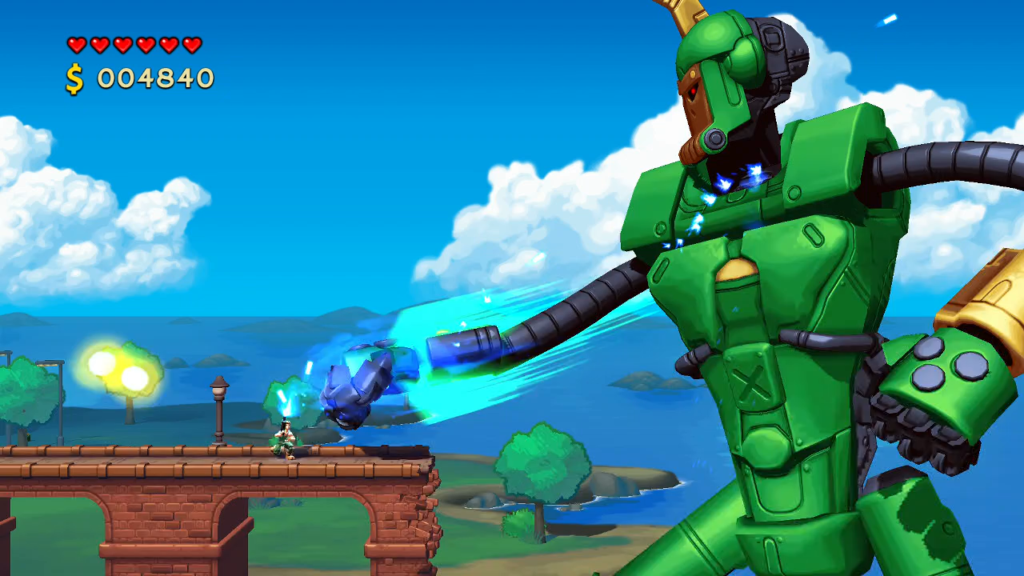
Boss encounters grow in complexity as the player character gains new abilities. First they learn how to cling to and climb up walls thanks to a pair of magnetic gloves. Later, they learn how to double jump. Both abilities are platforming cliches, but they are welcome additions due to the new MegaMechs which appear in response to them. These are among Mechstermination Force’s best.
The Mechscargot is a giant snail with an arsenal of guns, lasers, and missile launchers attached to its tank-like shell. Destroying its head is the easy part; its shell hides a surprising number of layers that contain some of Mechstermination Force’s hardest platforming challenges. Later, the player character challenges MegaMechs like the GunMech Five, a giant prancing cowboy whose head can only be reached by blowing off its covering and clambering up its skeleton, and the MechGyver C3, a huge robotic ape who uses its arms and legs to suspend itself hundreds of feet off the ground between two skyscrapers.
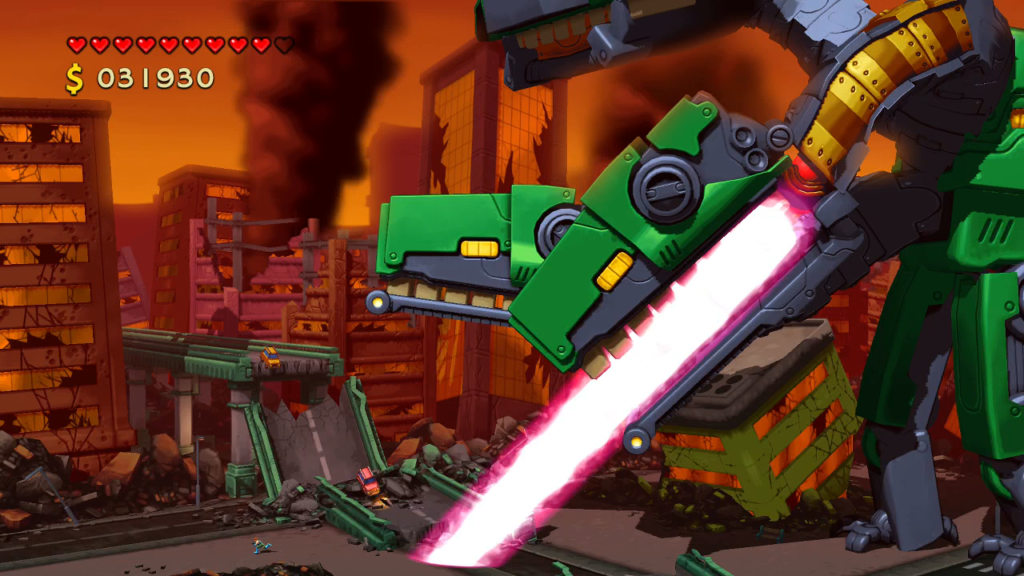
No two MegaMechs are quite the same. Each of them has outstanding design individually, and taken collectively they consist of a master course in boss design. Mechstermination Force knows where its strengths are, it leans into them, and it doesn’t bother with any filler. This is a videogame about killing giant bosses and it excels.
Part of the appeal of a boss rush-style videogame isn’t just in defeating the bosses one time, but in mastering them. Mechstermination Force is no different. By visiting an arcade machine at the Force base, I can rechallenge any MegaMech I have defeated to earn stars. I can earn up to three stars based on how fast I defeat each MegaMech, and an additional star for getting the player character through the fight without taking damage.
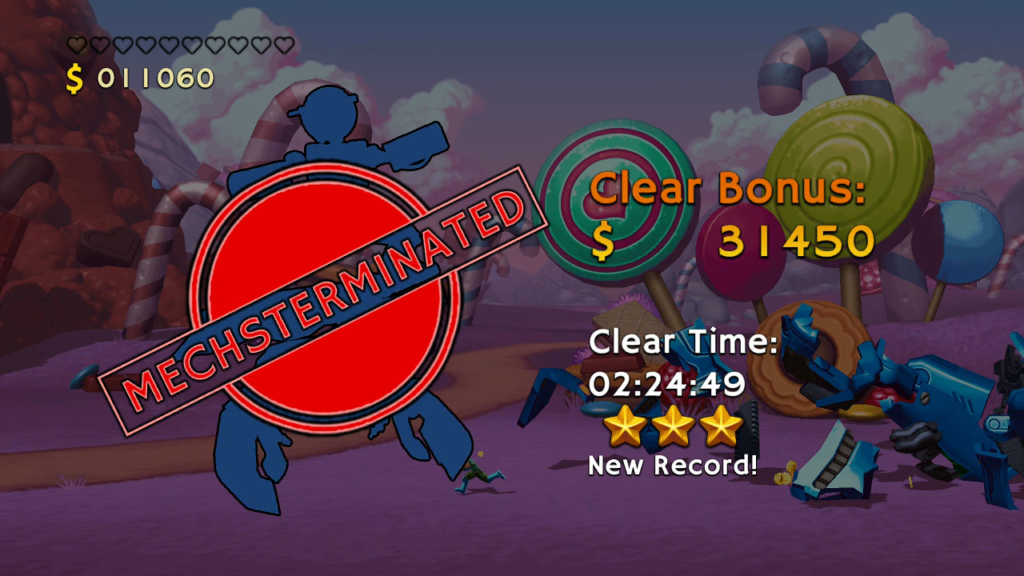
I can defeat all fourteen MegaMechs in a little over two hours, but I haven’t truly finished Mechstermination Force until I have earned every star, which will take many hours more.
To aid in my growing mastery against the MegaMechs, I am able to purchase optional upgrades for the player character using money earned from each fallen MegaMech. Most basic are the always-helpful health upgrades, creating a much-needed buffer for mistakes as boss encounters grow in length and complexity. More situational are the different gun varieties. A flamethrower deals high damage, but has limited range, while a laser offers greater range and can reflect off walls, but deals much less damage. All feel useful, but none feel necessary, the perfect application of optional upgrades.
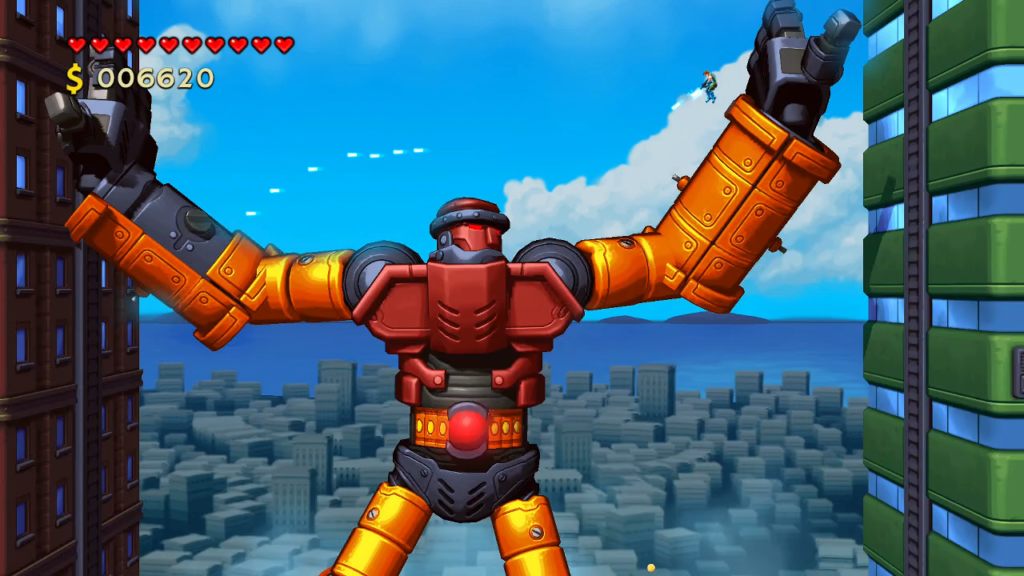
There isn’t much to say for Mechstermination Force. It’s a simple videogame that executes what it does well, then ends. The player character isn’t groundbreaking. It doesn’t need to be. It does what it does to make the videogame function. The real complexity of design is found in each of the MegaMech bosses. To describe them more than I have here would undermine the joy of learning how to fight them. Mechstermination Force is brief, yet joyously challenging, delightful to look at, and wonderful to hear. It checks all the boxes. It’s a worthy addition to the library of any action fan, an excellent boss rush package at a bargain price point.